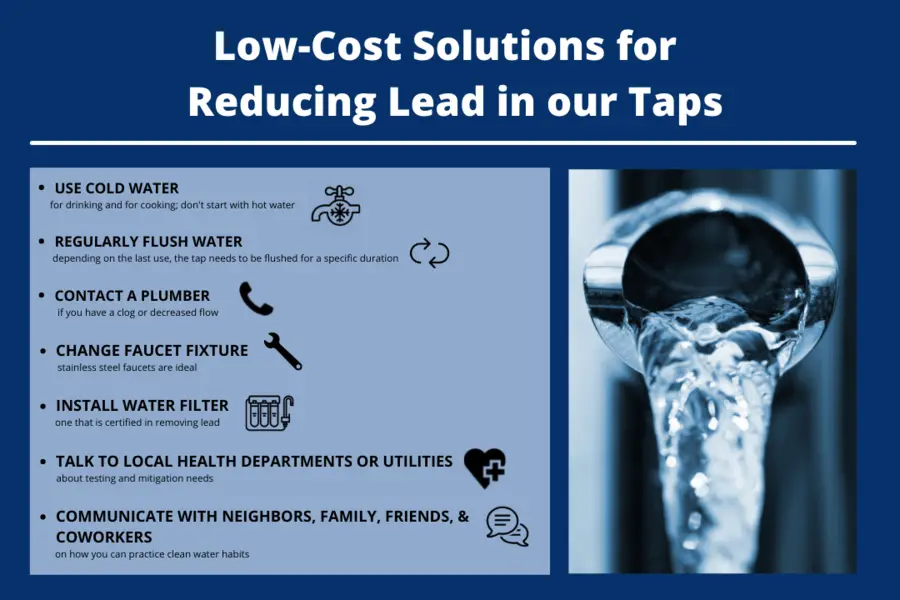Water infrastructure in the United States provides water access at the tap for most people. Unfortunately, the quality of our drinking water can vary widely – even from tap to tap within the same building. While water quality is not a new concern, the COVID-19 pandemic has exacerbated that concern, even inadvertently leading to an increase in childhood lead poisoning.
When we do not use water, it sits in the piping and plumbing within the building – stagnating. When our water gets older, called water age, it is more likely to accumulate lead from the piping and plumbing it is being held in.
We know that flushing water during periods of inactivity usually reduces lead levels and potentially any bacteria that may form. This is especially important to consider as businesses, schools, and childcare centers enact plans to reopen over the upcoming months from COVID-closures or regular summer closures.
Prior to reopening, all buildings should flush every tap concurrently for a prolonged period and continue to do so regularly.
Flushing is the process of running water after it has been sitting in your pipes without use. As water sits in pipes, it can pull lead and other metals from the pipes and fixtures it is sitting in. A general rule of thumb is 15 minutes to 1 hour of flushing for long term closures such as for COVID-19 or summer vacation; 3 to 5 minutes after holiday closures; and 1-2 minutes for daily or weekend closures.
The COVID-19 pandemic has created an unprecedented stagnation period in buildings, and so the exact amount of flushing that is required for each building and circumstance can vary, and concurrently flushing all taps for a prolonged period several times may be needed.
To check that taps are flushed well and do not contain elevated lead, they must be tested. This is because you cannot see lead, taste lead, or smell lead. There are several free and low-cost solutions to remove or reduce lead at the tap.

For more info on how to reopen offices safely, check out this recent NYT article outlining the importance of flushing taps, improving indoor air quality, and flexing schedules.
To learn more about lead testing options with RTI, go to www.cleanwaterforUSkids.org. You can also learn more about water filters certified to remove lead in drinking and cooking water and RTI’s program to decrease childhood lead exposure.

